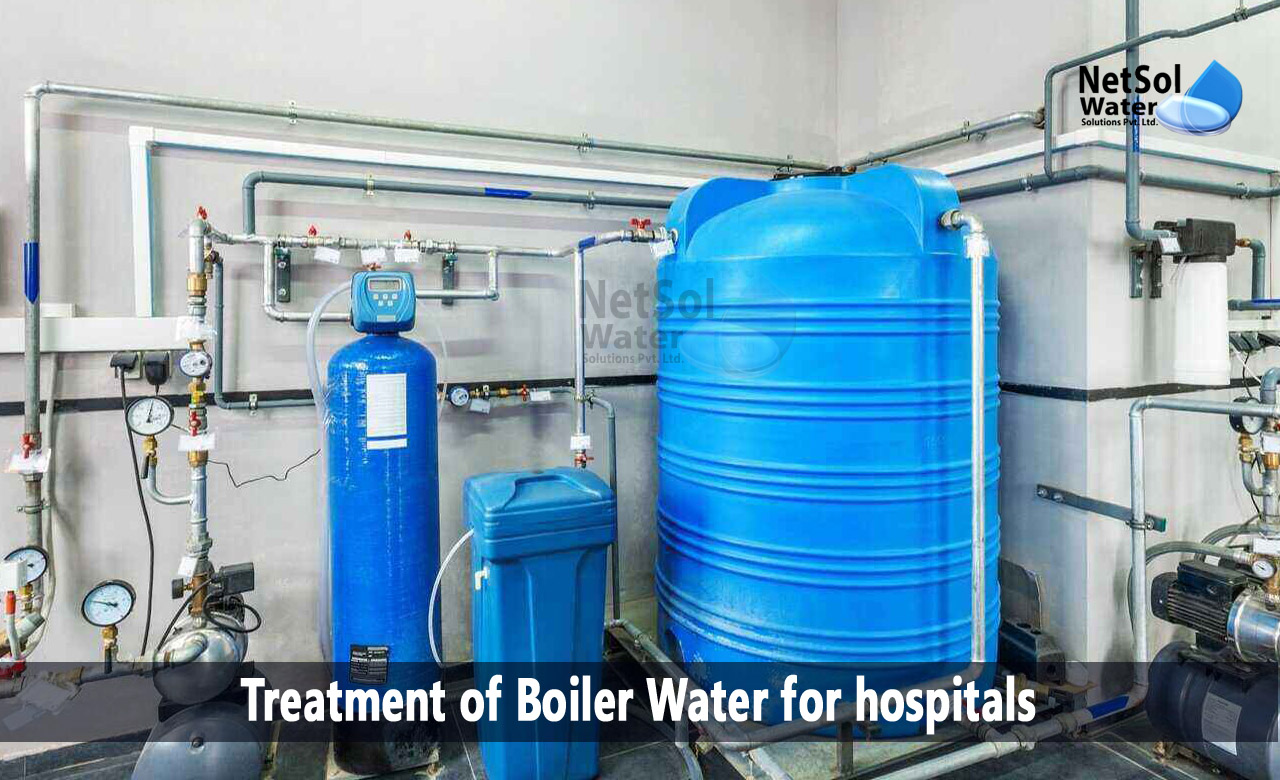Hospital steam purity is affected by Boiler Water Treatment
Steam purity is a measurement of all pollutants in steam. Many businesses place a premium on maintaining high steam purity, but there are few settings where it is more crucial than in hospitals, which use plant steam for operating room humidification or surgical equipment sterilization.
Any impurities in the steam at a hospital could potentially hinder effective sterilization, and be inhaled by patients, employees, and visitors. Hospitals will be able to ensure that high-purity plant steam is consistently produced, by knowing how and where to add the water treatment chemicals, as well as the variables that can cause boiler water carryover.
How to treat Boiler Water for hospitals?
1- Location of chemical feed is also vital
The storage area of the feedwater tank or de-aerator is the best feed point for neutralizing amines, and other treatment chemicals. To ensure better chemical distribution and more reliable system protection, the treatment chemicals are diluted before they enter each boiler by adding them to the feedwater reservoir.
This also enables uniform treatment residuals to be maintained in all operational boilers, and eliminates the spikes that occur when concentrated chemicals are applied directly to the steam header. Boilers receive treated feedwater in direct proportion to their load.
Additionally, hospitals that feed amine products to the steam header should be emphasised. When the corrosion of the condensate system cannot be stopped, a de-alkalizer or reverse osmosis system, is required to reduce makeup water
2- Feedwater Pump Run Time
Using a percentage timer or the boiler feedwater pump run duration, to activate the chemical feed pumps is another typical technique that might impact steam purity.
The run time of the feedwater pump is only proportionate to the steam load in certain circumstances for boiler systems, with on/off feedwater pumps on individual boilers. When there are changes in the quantity of condensate return or mechanical issues, which cause the feedwater pump run times to vary, the amount of chemical feed required does not always correspond to the feedwater pump run time.
Problems can also arise when adding treatment chemicals with % timer settings, since the chemical feed rates remain constant despite variations in the amount of steam being used or the steam load.
Ideal way to activate the feed pumps for the chemicals used in water treatment
It should be in proportion to makeup water demand that is metered, with all chemicals being fed straight into the storage area of the de-aerator or feedwater tank. As a result, products are distributed uniformly, and steam purity is better managed.
- Foaming/Carryover in Boilers
Steam impurities can come from a variety of sources besides neutralizing amine. Another prominent source of contamination is foaming or carryover. In order to reduce the possibility of instrument spots and damp packs in the sterilizers, condensed steam should have a maximum conductivity of 50 uS /cm.
Impurities in the steam can be caused by foaming or carryover due to high conductivity, excessive boiler water alkalinity, fast variations in demand, and high boiler water levels. The possibility of carryover may also be impacted by the boiler design. In places where the water quality might change periodically, monitoring the boiler water conductivity is very crucial. An automatic blowdown controller is necessary in these circumstances.
Conclusion
Hospitals will be able to ensure that high-purity plant steam is consistently produced, by knowing how and where to add the water treatment chemicals, as well as the variables that can cause boiler water carryover. This is essential to avoid concerns with surgical equipment staining, etc. Netsol Water offers efficient and effective water and wastewater treatment solutions for hospitals.



